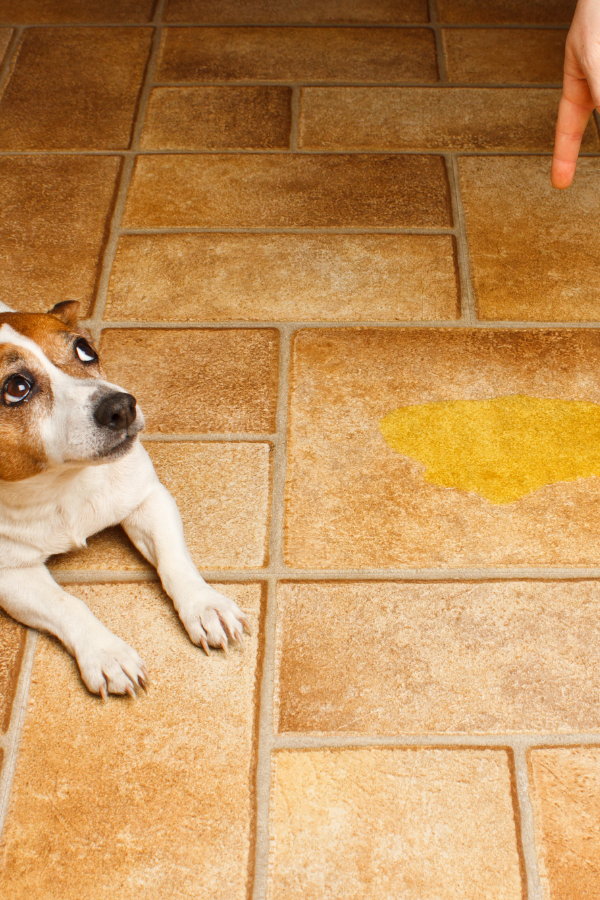Potty Training
By Shannon Wright
Animal Behavior College, Certified Dog Trainer
February 9, 2021
This is a potty training guide to help newly adopted dogs and their owners. If you encounter any repeated potty issues you should connect with your veterinarian first before continuing any training.
Preparation:
- Close all bedroom, den, loft and bathroom doors prior to the arrival of your new dog.
- If you’ve had a previous or visiting dog who had an accident in your house you’ll need to clean the area with an odor neutralizer prior to the arrival of the dog.
- Set up a crate in an appropriate area of your house
- Have tasty soft treats (no biscuit/hard type)
- Have a leash handy
- Create a potty schedule & routine
- Determine designated potty area:
For example, the far left side of your backyard or the neighbors front yard 
Bringing home a new dog is an exciting time! Now that you’ve gone through the steps to prepare your home for your new furry family member, what’s next?
One of the most desired behaviors dog owners want is for their dog to be potty trained perfectly. It’s important to set your dog up for success the moment you bring them home.
Before exiting your vehicle, be sure to have some tasty treats in your pocket.
While keeping your dog on leash, walk them through the house to briefly observe the common areas and then continue swiftly on leash to the area where you’ll want your dog to potty on a regular basis.
In the ‘potty area’ wait with your dog on a leash until the dog eliminates. Once your dog starts their potty business- praise praise praise and give the reward immediately after they’ve finished. It’s vitally important that you follow up your praise with reinforcements, the first time and EVERYTIME until you know your dog will successfully potty in the area. Be sure to keep your enthusiastic response to their potty behavior each time the dog potties in the designated area.
Now that you’ve designated a space for elimination, it’s likely you’ll be eager to bring the dog back inside and take off the leash. I suggest that you continue to guide the dog through the house on leash. Allow your new dog to explore what’s behind the closed doors with you one room at a time.
After a brief tour of your house it’s back out (on leash) to the designated potty area.
Please keep in mind this is an entirely new environment for your dog, the smells, sounds and sights are sure to create a spectrum of emotions for your dog. Walk in the area with the dog until they do #2. Praise, “yes! Good job!” and give several treats for their success!
Repeat several times throughout the day and at night, your consistency and routine will help the dog gain the understanding of what’s expected when ‘we’ go outside on the leash.
Next you’ll want to add a cue (word) for the potty behavior. As soon as you see indicators of your dog eliminating, say the word you desire, “potty, business”, to cue the behavior. Then praise, “yes! Good job!”, and give several tasty treats (rewards) for their success! Your dog will start to associate the cue (word) with the behavior and as long as you give good reinforcements your dog will be happy to comply.
You’ll want to keep access to rooms limited until your dog gets the hang of the bathroom business. Begin to crate train your dog so you can set boundaries and limitations to space that would be inviting to soil on when your dog is unsupervised.
- Be sure to use your crate as a positive management tool and research how to acclimate your dog to a new crate space. Crates should not be used as a punishment tactic.
Once your dog becomes more reliable to eliminate in the designated area you can start to phase out the leash (if your designated area is fenced). Make sure to stick to the exact routine and reward system you’ve given while on leash.
Finally you can start to provide a little more freedom around the house but must continue with the same routine and reward system that has built up the successful behavior.
A common mistake when an accident happens is for us to show we are displeased with the dogs behavior.
Instead perform the following:
- Without any words or negative body language, remove the dog from the area.
- Ensure the dog cannot see you
- Clean up the mess, use odor neutralizer
- Start back at stage one with leashing your dog and escorting them to the designated potty area
- When they eliminate praise and when they finish their business handsomely reward.
- Repeat step 4 and 5 until you can phase out the leash. You may also find it helpful to go back to limiting access and implement the crate training.
- Keep with the routine, praise and reward handsomely for successful trips to the bathroom.
- Don’t ever punish your dog for having an accident, you could create a fear associated response which may result in more challenges behaviorally & medically in the future.